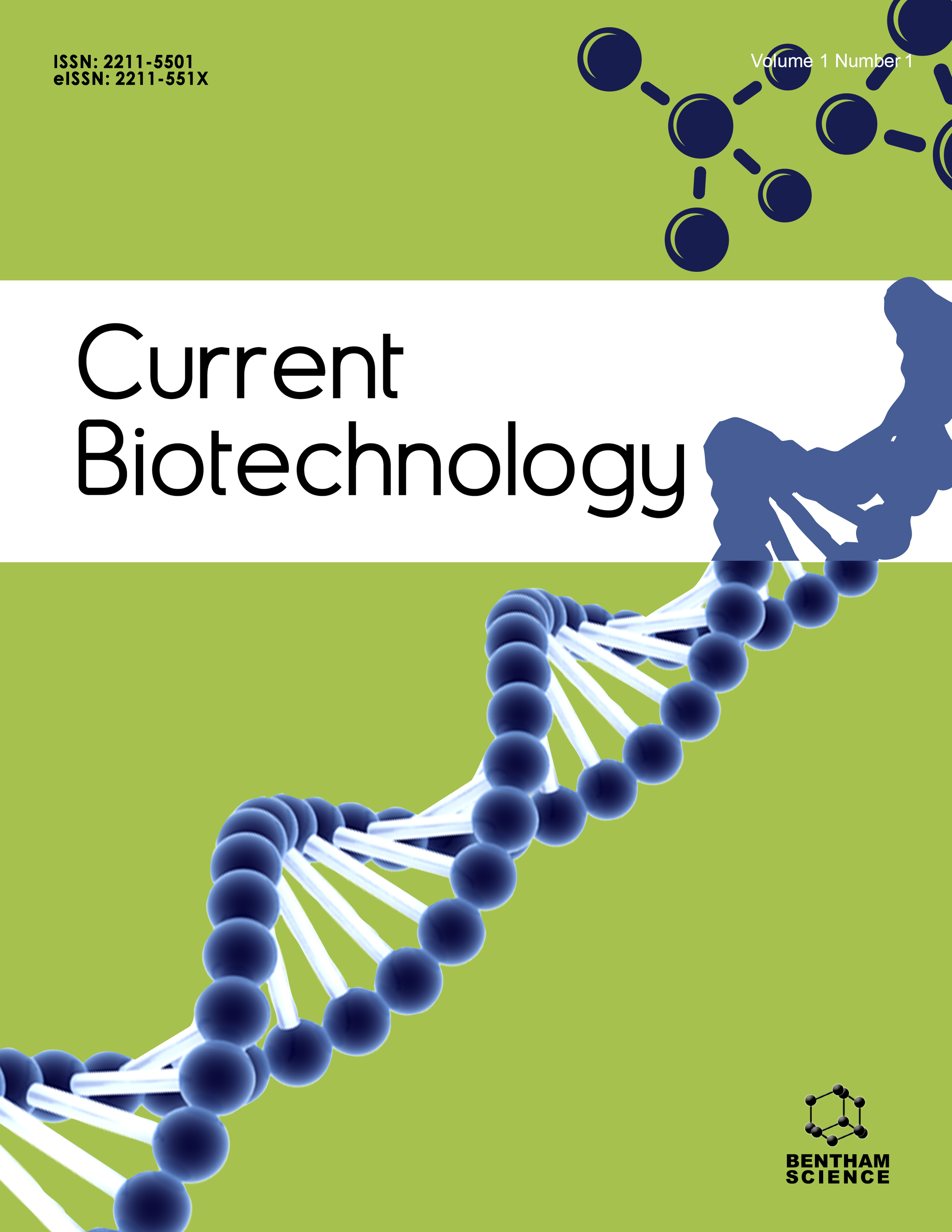- Home
- A-Z Publications
- Current Biotechnology
- Issue Home
Current Biotechnology - Current Issue
Volume 13, Issue 4, 2024
-
-
Transcriptome Mining, Identification and In silico Characterization of Thaumatin-Like Protein Sequences from Mentha Longifolia
More LessAuthors: Rekha Chouhan, Nancy Sharma, Vijay L. Jamwal, Sahaurti Sharma and Sumit G. GandhiBackgroundThaumatin-like proteins (TLPs) constitute the PR-5 family of plant pathogenesis-related (PR) proteins and are responsible for host defense and various growth and development-related processes. Mints (Mentha sp.) are essential oil-bearing plants, mainly affected by water availability and fungal pathogens.ObjectiveIdentification of candidate TLPs in Mentha longifolia that may help to counter pathogen infect Read More
-
-
-
Synergistic Structural Inhibition of MMP-9 by Natural Flavonoids: A Natural Combinatorial Therapy against Cancer
More LessAuthors: Mahendra Pratap Singh, Brijesh Shivhare and Anand Kumar PandeyIntroductionCancer is the uncontrolled proliferation of cells leading to metastasis due to genetic alterations resulting in oncogenes activation and tumor suppressor genes deactivation. It is the 2nd leading cause of death across the world. MMP-9 or gelatinase B, plays an effective role in ECM degradation, normal tissue turnover, and tissue remodelling. Overexpression of MMP-9 has been studied in almost all types of cancers p Read More
-
-
-
Characterization of a Polyphenol Oxidase and Lipase Produced by Microbes Derived from Palm Oil Sludge
More LessAuthors: Benedict Aka, Dhanashree Lokesh, Shilja Choyam and Kammara RajagopalIntroductionThe waste-to-wealth concept was applied in this study. Our main objective was to identify and evaluate several microorganisms responsible for the production of important industrial enzymes using sludge from palm oil processing. We were able to isolate several bacteria that are tyrosinase producers: Bacillus cereus, Acinobacter seifertii, Klebsiella variicola and Pseudomonas stutzeri. Laccase producers Trame Read More
-
-
-
Isolation of Plasmid from a New Strain of Enterococcus faecium and its Construction for Use as Shuttle Cloning Vector
More LessAuthors: Amit Hazra, Pijush K. Saha, Shreya Das, Dipanwita Bhattacharjee and Barun K. BhattacharyyaIntroductionEnterococci are natural inhabitants of the human gastrointestinal tract and contain plasmids, which are often used to generate plasmid vectors. RGK7, a strain of Enterococcus faecium isolated from neonatal faeces, natively contains a 1935 bp plasmid pRGK7d.ObjectiveThis study focused on the molecular characterization of the Enterococcus faecium plasmid pRGK7d and its exploitation for the generation of shuttl Read More
-
-
-
Differential Responses of Root Rot Pathogen Rhizoctonia solani in Tolerant and Susceptible Varieties of Tomato at Various Physiological Levels
More LessAuthors: Nitaswini Dutta, Madhura Das and Sarmistha RayIntroductionThis study investigates the defense responses of tolerant versus susceptible varieties of tomato against the hemi biotroph pathogen Rhizoctonia solani.MethodsThe early infection of Rhizoctonia solani was characterized by a tolerant Pusa Ruby and a susceptible tomato variety, Oriental (VT- 946).ResultsThe microscopy experiments showed more hyphal growth in a susceptible plant than in a tolerant one. The hyp Read More
-
Most Read This Month Most Read RSS feed
Article
content/journals/cbiot
Journal
10
5
false
en


